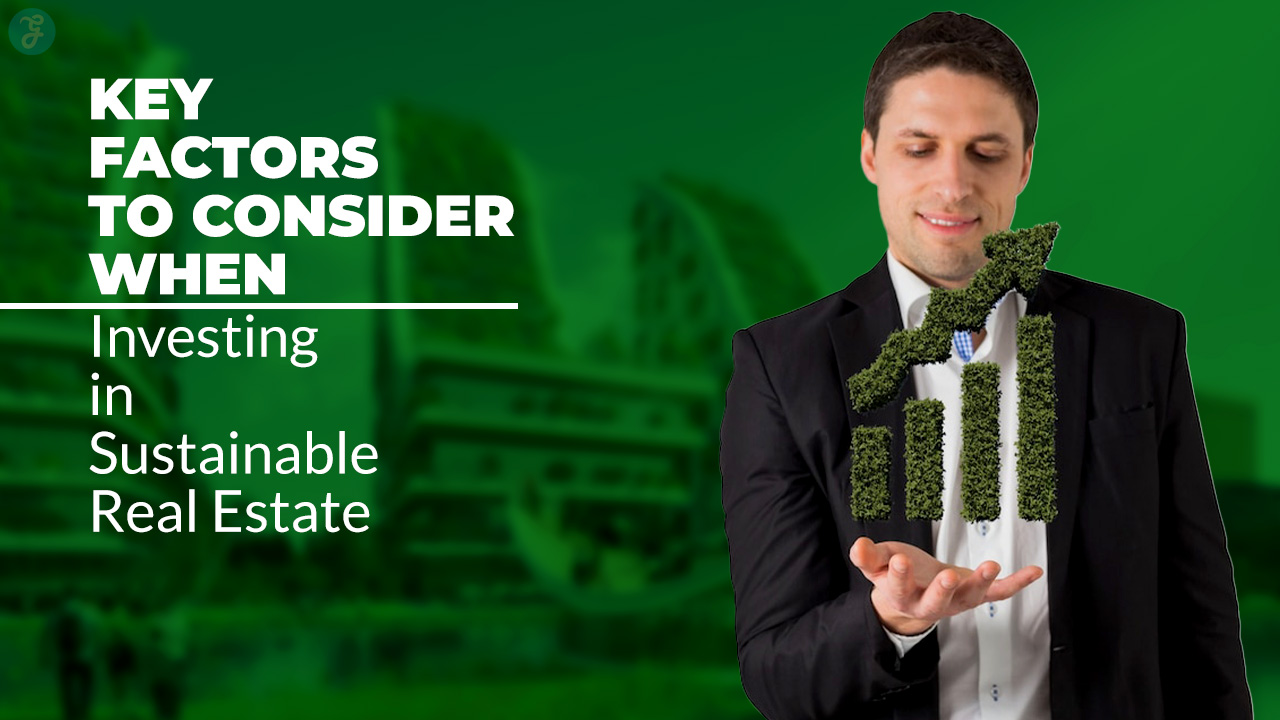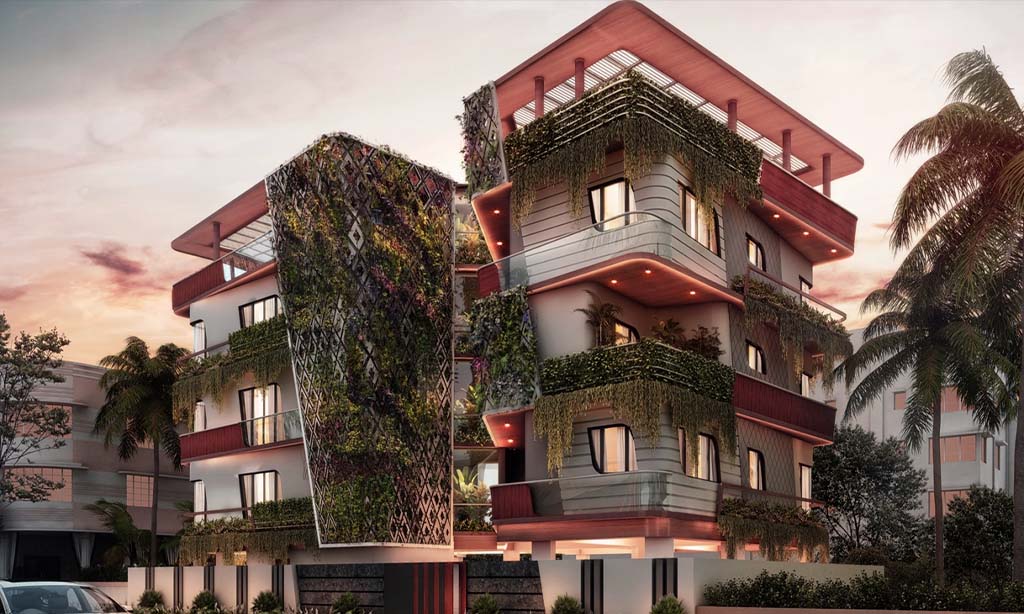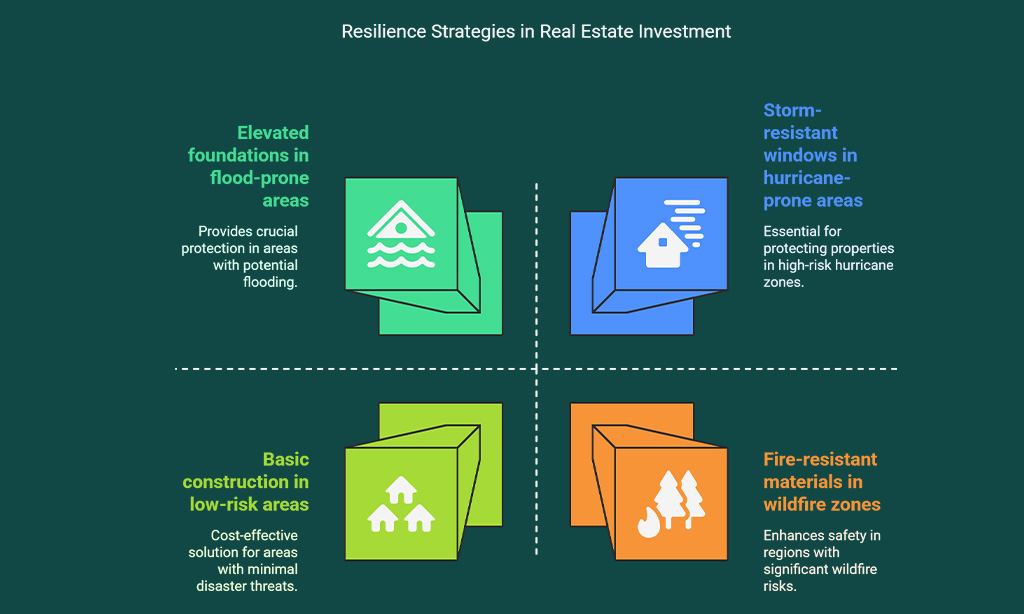Real estate has always been a staple of successful investment portfolios, but the landscape is changing. As sustainability takes the forefront of global conversations, investors are increasingly seeking out eco-friendly options.
Sustainable real estate investment isn’t just a passing trend—it’s a long-term strategy that’s reshaping the way we think about property ownership and investment.
In this comprehensive guide, we’ll walk you through the 10 Key Factors to Consider When Investing in Sustainable Real Estate, covering everything from location and energy efficiency to financial considerations and government incentives.
With a focus on practical, actionable insights, this article is designed to give you a complete understanding of what’s involved in making an environmentally-conscious investment in the real estate market.
1. Location and Environmental Impact
Location has always been a primary consideration in real estate investments, but sustainable real estate demands a more nuanced approach. When investing in sustainable properties, it’s essential to look at the environmental factors of the location—such as its proximity to transportation hubs, green spaces, and renewable energy sources.
Properties in areas that are close to public transportation or bike paths are more sustainable because they encourage less reliance on cars, reducing overall emissions. Additionally, properties located in areas with strict environmental regulations or incentives often provide better long-term prospects for investors.
How Proximity to Green Spaces Affects Investment Value
Green spaces like parks, gardens, and other outdoor amenities have been proven to increase the attractiveness of residential and commercial properties. Not only do these spaces provide environmental benefits, such as improving air quality and reducing urban heat islands, but they also contribute to higher property values and rental rates.
For example, according to a study by the University of Washington, properties within 500 feet of green spaces saw an average increase in value of 8%. This kind of increase can lead to significant financial returns, making green spaces an important consideration for investors.
Environmental Regulations to Consider
Every location has its own set of environmental rules and regulations, which can affect your investment’s long-term viability. Cities with strict sustainability goals often offer incentives for green building projects, such as tax rebates or expedited permitting. Conversely, areas with weak regulations may expose you to risks such as climate-related natural disasters or costly renovations to comply with new laws.
Key Takeaway
Make sure to research the environmental regulations and incentives of your desired location to maximize both your investment and its environmental impact.
Benefits of Location for Sustainable Real Estate
| Factor | Benefit |
| Proximity to Public Transport | Reduces dependency on cars, lowering the carbon footprint of tenants and owners. |
| Access to Green Spaces | Increases property value and rental potential due to enhanced aesthetics and outdoor amenities. |
| Stringent Environmental Regulations | Ensures long-term sustainability with lower regulatory risks and access to incentives. |
2. Energy Efficiency and Green Building Certifications
Energy efficiency is one of the cornerstones of sustainable real estate investment. A property that’s energy-efficient lowers utility bills, attracts more tenants, and benefits from a higher resale value.
The LEED (Leadership in Energy and Environmental Design) certification is one of the most recognized labels for sustainable buildings. Buildings with LEED certification meet rigorous environmental standards, including energy efficiency, water use reduction, and sustainable materials usage.
Other certifications include BREEAM (Building Research Establishment Environmental Assessment Method) and ENERGY STAR, which also focus on reducing energy consumption and carbon emissions. These certifications can significantly enhance a property’s marketability, both for resale and rental purposes.
The Role of Energy Efficiency in Property Value
Energy-efficient properties are highly desirable in today’s market. A 2018 report from The Institute for Market Transformation found that energy-efficient buildings have an average of 10% higher rental rates and 20% higher property value appreciation than their less-efficient counterparts. Energy-efficient buildings can lead to reduced operating costs, lower maintenance expenses, and higher long-term value.
Key Features of Energy-Efficient Buildings
A few common features that contribute to energy-efficient buildings include:
- Insulation: High-quality insulation reduces heating and cooling costs.
- Smart thermostats: Automatically adjust heating/cooling based on occupancy, saving energy.
- LED lighting: Energy-efficient lighting that uses less power and has a longer lifespan.
- Solar panels: Produce clean, renewable energy that reduces reliance on non-renewable sources.
Key Takeaway
Look for properties with green certifications, as these will often command higher rent, experience fewer vacancies, and have a higher resale value.
Key Features of Energy-Efficient Buildings
| Feature | Benefit |
| Solar Panels | Provides renewable energy, reducing dependency on grid power and cutting electricity costs. |
| Smart Thermostats | Reduces energy consumption by adjusting heating/cooling automatically based on usage patterns. |
| LED Lighting | Lowers energy use and reduces long-term maintenance and replacement costs. |
| High-Quality Insulation | Keeps buildings comfortable year-round by preventing heat loss, reducing energy bills. |
3. Financial Considerations for Sustainable Real Estate
One of the key financial advantages of sustainable real estate is the potential for cost savings. Green buildings are often designed to be energy-efficient, which means that the operating costs will be lower over time. For example, properties with solar panels or energy-efficient HVAC systems can save thousands of dollars annually in energy costs.
In addition to reducing utility bills, these properties may also require fewer repairs and maintenance. Many sustainable features, such as quality insulation or double-glazed windows, have a longer lifespan, reducing the need for costly replacements.
Financing Options for Green Real Estate Investments
Green building projects often come with additional costs upfront. However, various financing options are available to help offset these costs. Many financial institutions now offer “green loans” that have lower interest rates for sustainable real estate investments. These loans are designed to encourage the development of energy-efficient and environmentally friendly properties.
Additionally, several government programs and incentives offer rebates or grants for renewable energy installations, energy-efficient systems, or other sustainable upgrades.
Long-Term ROI for Sustainable Properties
While the initial investment for sustainable real estate can be higher than conventional properties, the long-term return on investment (ROI) is typically stronger. As demand for sustainable properties grows, both rental rates and property values tend to increase. Plus, the lower operating costs associated with energy-efficient buildings often lead to higher profit margins.
Key Takeaway
Sustainable properties provide significant cost savings and financing opportunities that lead to stronger ROI over the long term.
Financial Benefits of Sustainable Real Estate
| Financial Benefit | Explanation |
| Lower Operating Costs | Energy-efficient buildings have reduced utility bills and maintenance needs. |
| Financing Incentives | Green loans and tax credits lower initial investment costs and increase profitability. |
| Higher Property Values | Sustainable properties typically experience faster appreciation and higher market demand. |
4. Demand and Market Trends for Sustainable Real Estate
The demand for green real estate is skyrocketing as consumers and businesses alike prioritize environmental responsibility. According to the National Association of Realtors (NAR), nearly 40% of home buyers in 2020 reported that energy efficiency was a key factor in their purchasing decisions. Commercial tenants are also increasingly seeking out LEED-certified office spaces to align with their corporate sustainability goals.
As more people adopt sustainable lifestyles, there’s a growing expectation that their homes and workplaces should reflect these values. This trend is likely to continue, making sustainable properties an increasingly profitable investment.
How Consumer Preferences Are Shaping Sustainable Investment
Investors who cater to the growing demand for sustainable living will reap the benefits in the form of higher rental yields and faster property turnover. With the rise of conscious consumerism, people are willing to pay a premium for homes and offices that offer environmental benefits.
This shift in consumer behavior presents an opportunity for investors to position themselves in the green real estate market early, before demand peaks.
Predicting Future Market Trends
Looking ahead, the demand for sustainable properties is expected to grow exponentially. According to a 2020 report by JLL, green building trends will likely continue to accelerate in the coming decades, driven by corporate sustainability goals, rising energy costs, and stricter environmental regulations.
Investors who are proactive in adopting sustainable building practices will not only future-proof their portfolios but also position themselves for greater financial returns.
Key Takeaway
The green real estate market is booming, and investors who tap into this trend early will be able to reap the benefits of long-term demand.
Growing Demand for Sustainable Properties
| Factor | Effect on Investment |
| Increased Consumer Demand | Higher rental rates and faster turnover of properties due to rising eco-conscious buyer preferences. |
| Corporate Sustainability Goals | Commercial tenants seek energy-efficient spaces to meet their own sustainability targets, increasing demand for green buildings. |
| Stricter Regulations | Growing regulations may force non-sustainable buildings to comply, further raising the value of green properties. |
5. Government Incentives and Regulations
Governments around the world are offering incentives for real estate investors who focus on sustainability. These programs can include tax rebates, grants, and low-interest loans for green construction projects or energy-efficient renovations.
For instance, the U.S. federal government provides various tax credits for solar energy installations and energy-efficient appliances. Other nations, like Germany, offer financial support for sustainable building upgrades through their energy efficiency programs.
Understanding Tax Benefits and Incentives
Sustainable investments can qualify for a range of financial incentives. In the U.S., tax credits and rebates for energy-efficient homes can significantly reduce the cost of energy-efficient upgrades. Additionally, property owners may benefit from accelerated depreciation schedules, reducing their tax burden in the short term.
Navigating Zoning and Local Regulations
Zoning laws and building codes vary by location, and they can have a significant impact on the feasibility of sustainable real estate projects. In cities with strong sustainability initiatives, you may find zoning allowances or expedited permitting for projects that meet green building criteria. Familiarizing yourself with these regulations ensures that you are maximizing the potential incentives available to you.
Key Takeaway
Government incentives and regulations can significantly reduce the costs associated with sustainable real estate investments, boosting both profitability and sustainability.
Government Programs for Green Real Estate
| Program | Benefit |
| Tax Credits for Renewable Energy | Reduces installation costs for solar panels, wind turbines, and other renewable systems. |
| Low-Interest Green Loans | Provides favorable financing terms for green building projects. |
| Energy Efficiency Grants | Offers financial support for energy-efficient renovations or new constructions. |
6. Sustainable Building Materials and Construction Practices
One of the most significant aspects of sustainable real estate is the materials used in construction. The choice of building materials plays a key role in reducing the environmental impact of a property throughout its lifecycle. Sustainable materials are not only environmentally friendly but also often more durable, leading to reduced maintenance and longer lifespans for buildings.
Sustainable building materials include renewable or recycled products such as bamboo, reclaimed wood, recycled steel, and low-impact concrete alternatives. These materials reduce the reliance on virgin resources and lower carbon emissions associated with their production and transportation.
Additionally, eco-friendly materials improve the indoor air quality of properties, creating healthier living or working environments. For example, low-VOC (volatile organic compound) paints and finishes help maintain clean indoor air by emitting fewer harmful chemicals.
Benefits of Using Sustainable Materials
Sustainable materials offer numerous benefits:
- Reduced environmental impact: Sustainable materials are more energy-efficient and have a lower carbon footprint compared to traditional construction materials.
- Lower operational costs: Many sustainable materials, such as advanced insulation and energy-efficient windows, help reduce the overall energy consumption of the building.
- Improved marketability: As demand for eco-friendly homes rises, properties made with sustainable materials are more attractive to buyers and tenants who value environmental responsibility.
Case Study: Sustainable Materials in Action
In 2019, a commercial office building in New York City was constructed using 90% recycled and sustainable materials. This project included the use of reclaimed wood, recycled concrete, and energy-efficient glazing. The result was a building that not only met sustainability goals but also reduced construction costs by 15% and increased tenant demand by 20% within the first year of operation.
Key Takeaway
Choosing sustainable building materials can lower your carbon footprint, enhance property value, and create a healthier living environment for occupants, making them a vital consideration in sustainable real estate investment.
Popular Sustainable Building Materials and Their Benefits
| Material | Benefit |
| Bamboo | Renewable, durable, and biodegradable, bamboo can replace traditional hardwood in flooring and furniture. |
| Reclaimed Wood | Reduces deforestation and minimizes landfill waste by repurposing old wood for new projects. |
| Recycled Steel | Using recycled steel reduces energy consumption and prevents the need for new steel production. |
| Low-VOC Paints and Finishes | Improves indoor air quality by emitting fewer toxic chemicals, making it ideal for residential spaces. |
7. Resilience to Climate Change and Natural Disasters
As the effects of climate change become increasingly apparent, resilience has become a critical factor in real estate investment. Properties that are built to withstand natural disasters such as floods, hurricanes, wildfires, and extreme heat will offer better long-term security for investors.
Designing for resilience involves considering factors such as elevated foundations in flood-prone areas, fire-resistant materials in wildfire zones, and storm-resistant windows in hurricane-prone regions. Buildings that are resilient to climate change not only protect the investment but also ensure the safety and comfort of their occupants.
Strategies to Enhance Climate Resilience
To make your sustainable real estate investment more resilient, consider implementing the following strategies:
- Flood-resistant design: Elevate properties above flood levels, use water-resistant materials, and incorporate stormwater management systems.
- Fire-resistant construction: Use fire-resistant materials such as concrete, steel, and fire-resistant roofing to protect properties in fire-prone areas.
- Energy resilience: Install backup energy systems such as solar-powered batteries that ensure continued power during grid outages caused by storms or natural disasters.
Case Study: Resilient Real Estate in Practice
A coastal town in Florida recently completed a large-scale housing project designed to withstand hurricane-force winds and flooding. The project utilized raised foundations, hurricane-resistant windows, and solar power systems to ensure that the homes would remain habitable and operational during storms. After Hurricane Ian hit in 2022, these homes experienced minimal damage, while neighboring properties suffered significant losses. This demonstrated the importance of building resilience into properties from the start.
Key Takeaway
Investing in resilient real estate ensures that properties will withstand natural disasters and climate change effects, offering long-term stability and security.
Resilience Features for Sustainable Real Estate
| Feature | Benefit |
| Flood-Resistant Design | Protects properties from flood damage by elevating foundations and using water-resistant materials. |
| Fire-Resistant Materials | Minimizes the risk of fire damage, especially in wildfire-prone areas, by using fireproof building materials. |
| Solar-Powered Backup Systems | Ensures uninterrupted energy supply during power outages, making homes and buildings more self-sufficient during extreme weather events. |
8. Tenant and Community Impact
Sustainability not only benefits investors but also offers significant advantages for tenants. Tenants who rent or buy in sustainable buildings often experience reduced living costs due to lower energy and water bills. Additionally, they are more likely to live in healthier environments due to better air quality and more access to natural light.
Sustainable properties also promote social benefits by fostering a sense of community. Features like shared gardens, eco-friendly playgrounds, and green rooftops not only improve the property’s aesthetics but also provide social spaces where tenants can connect, engage, and promote environmental consciousness.
Social Impact and Community Engagement
When investing in sustainable real estate, consider the social impact of your investment. Green buildings often contribute to local communities by creating jobs in sustainable construction and reducing pollution. Furthermore, many sustainable development projects include elements of affordable housing, ensuring that these properties are accessible to a broader demographic.
Sustainable buildings also encourage local food production by incorporating community gardens or nearby urban farms. This fosters self-sufficiency and reduces the carbon footprint associated with transporting food from distant locations.
Case Study: Sustainable Housing Project with Community Focus
In Portland, Oregon, a mixed-use development was built with sustainable materials and designed with community engagement in mind. The project included energy-efficient apartments, community gardens, and shared public spaces. Not only did the project reduce the environmental impact, but it also created a tight-knit community of residents who supported one another in sustainability initiatives, such as composting and recycling programs.
Key Takeaway
Sustainable properties benefit tenants through lower costs and improved quality of life while also contributing positively to the surrounding community.
Social and Community Benefits of Sustainable Properties
| Benefit | Explanation |
| Lower Living Costs | Energy-efficient designs reduce utility bills, making sustainable properties more affordable for tenants. |
| Healthier Living Environments | Better air quality and more natural light improve the overall health of occupants. |
| Stronger Sense of Community | Shared green spaces and eco-friendly amenities foster connections between tenants and the wider community. |
9. Technological Innovations in Sustainable Real Estate
Technology plays a significant role in enhancing the sustainability of real estate. Smart technologies can help optimize energy consumption, enhance tenant comfort, and reduce a property’s overall environmental impact.
Some of the most common smart technologies used in sustainable buildings include:
- Smart meters: Track real-time energy consumption and help building managers identify areas for efficiency improvements.
- Building management systems (BMS): Monitor and control HVAC systems, lighting, and other utilities to ensure energy efficiency.
- Automated lighting: Adjusts lighting based on occupancy or time of day, reducing electricity usage when the building is unoccupied.
- Smart thermostats: Automatically regulate indoor temperatures based on occupancy patterns and weather forecasts, ensuring energy is used efficiently.
Case Study: Smart Technology Integration in Green Real Estate
A commercial office building in San Francisco integrated a range of smart technologies, including automated lighting, smart HVAC systems, and energy monitoring software. These innovations reduced the building’s energy consumption by 30% in the first year, leading to significant cost savings for tenants and improved marketability of the property.
Key Takeaway
Incorporating smart technologies into sustainable real estate investments can lead to significant savings and enhanced efficiency, improving the overall value of the property.
Smart Technologies for Sustainable Real Estate
| Technology | Benefit |
| Smart Meters | Track and analyze real-time energy use, helping identify areas for optimization and savings. |
| Building Management Systems | Automate energy-intensive systems (HVAC, lighting) to enhance energy efficiency. |
| Automated Lighting Systems | Adjust lighting based on occupancy or natural light, reducing unnecessary energy consumption. |
| Smart Thermostats | Regulate temperature based on usage patterns, reducing heating and cooling costs. |
10. Legal and Regulatory Compliance
Sustainable real estate investments are subject to a variety of local, regional, and national regulations. As the global focus on sustainability intensifies, governments are implementing stricter rules related to energy consumption, emissions, and waste reduction in buildings.
Familiarizing yourself with these regulations is essential to ensure that your properties comply with legal standards and benefit from incentives. For instance, many regions now have mandatory energy efficiency ratings for buildings, and failure to meet these standards could result in penalties or reduced property value.
Navigating Local Zoning Laws and Building Codes
Zoning laws and building codes can impact the feasibility of your sustainable real estate investment. Some areas may offer incentives for eco-friendly projects, while others may impose stricter standards for new construction or renovations.
Work with local authorities to ensure compliance with zoning laws and building codes related to green building practices. This will not only keep your investment in good standing but also maximize the long-term potential of your properties.
Key Takeaway
Understanding and adhering to legal and regulatory requirements is crucial for the success of any sustainable real estate investment. Compliance ensures your property remains competitive and eligible for tax credits or incentives.
Key Regulations and Compliance Areas for Sustainable Real Estate
| Regulation Area | Impact |
| Energy Efficiency Standards | Ensure that properties meet minimum energy performance standards to avoid penalties or fines. |
| Waste and Water Reduction | Many regions require specific waste management and water conservation practices for new buildings. |
| Green Building Codes | Compliance with local or national green building codes ensures that your property is sustainable and eligible for certifications. |
Wrap Up
Investing in sustainable real estate presents an opportunity to achieve strong financial returns while making a positive impact on the environment. By carefully considering 10 Key Factors to Consider When Investing in Sustainable Real Estate, investors can navigate the complexities of this growing field and secure long-term success.
From understanding energy efficiency and market trends to leveraging government incentives and certifications, sustainable real estate offers a diverse range of benefits. As consumer preferences shift and the green building market continues to grow, those who invest wisely now will be well-positioned to capitalize on the booming demand for eco-friendly properties.
Now is the perfect time to begin exploring sustainable real estate investments, aligning your portfolio with both your financial and ethical goals.
Real estate has always been a staple of successful investment portfolios, but the landscape is changing. As sustainability takes the forefront of global conversations, investors are increasingly seeking out eco-friendly options. Sustainable real estate investment isn’t just a passing trend—it’s a long-term strategy that’s reshaping the way we think about property ownership and investment.
In this comprehensive guide, we’ll walk you through the 10 Key Factors to Consider When Investing in Sustainable Real Estate, covering everything from location and energy efficiency to financial considerations and government incentives.
With a focus on practical, actionable insights, this article is designed to give you a complete understanding of what’s involved in making an environmentally-conscious investment in the real estate market.









































